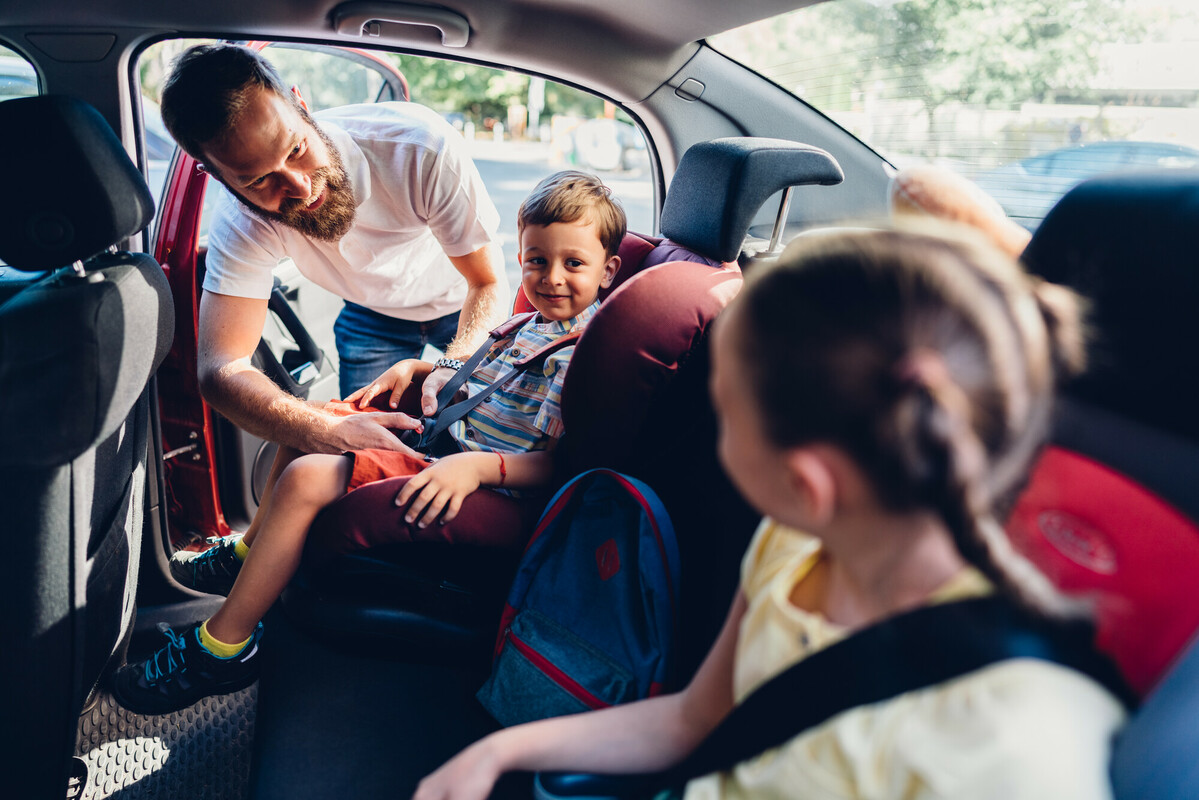Most parents out there will have struggled with fitting a child seat into a car. There’s little that’s simple and easy about child seats either from choosing the right one amid the myriad options, trading up to a larger seat once a child outgrows yet another one and, as for the fitting, it can feel like trying to strap an astronaut into a space capsule. All that said, child seats are essential for your child’s safety when travelling in a vehicle and, not only that, but they’re a legal requirement too.
What does the law say about child car seats in Ireland?
Drivers have a legal responsibility to ensure that all passengers under 17 are appropriately restrained, and by law, all children under 150cm (4ft 11in) in height or 36kg in weight must use a child restraint system (child car seat or booster cushion) appropriate to their height and weight.
It is illegal to place a rearward-facing car seat in the front of a car where there is an active airbag, as the deployment of an airbag in the event of a crash could be potentially fatal to the child. Failure to either deactivate the airbag or put the child in the back seat could earn a driver three penalty points on their licence.
There isn’t actually any law against children sitting in the front of the car as long as they’re using the appropriate child restraint system for their height and weight, but bear in mind that airbags are designed for adults, and even when a youngster is in a child seat, it won’t accurately replicate the position of an adult for which the airbag is designed and so won’t fully protect the child as intended.
All new child restraint systems sold in Ireland should bear the “E” mark and comply with EU standards UN ECE 4403/04 or Regulation 129 to ensure their quality. The best way to be certain that it does is to buy from a reputable retailer.
Always ensure that no matter what your child’s height or weight, if they’re using a child seat or booster cushion, that they’re within the manufacturer’s specified height and weight for that particular model, as otherwise the seat may not give them the appropriate protection in a crash.

How do I know when a child no longer needs a child seat or booster cushion?
If your child grows taller than 150cm and heavier than 36kg, you shouldn’t necessarily do away with a booster cushion, as a car’s seatbelt may not give them the full protection they require. To assess whether a child has really outgrown the need for a booster, visually and physically check that a car’s seatbelt rests across their shoulder and pelvis and does not touch their neck or stomach. If the seatbelt doesn’t fit properly, it’s worth considering whether it might be a good idea to keep the booster seat in action for a little longer.
Fitting a child car seat
There’s no how-to guide that will apply to every type of child car seat or booster cushion, which further goes to highlight how important it is to buy a car seat from a reputable retailer. They should be able to fit a car seat for you and show you how to do it correctly yourself.
As far as knowing what makes a reputable retailer, the Road Safety Authority has published a list of all shops in Ireland that comply with its Code of Practice for child car seat retailers and which will give those buying a child seat the best advice when it comes to choosing the right one and on fitting it in your car.
Making things quite a lot easier for parents is ISOFIX, an international standard of built-in attachment points in a car that makes it simpler to correctly fit a child car seat. Although ISOFIX points are usually quite clearly marked, it’s still worth checking your car’s user manual to be on the safe side.
Can I buy a second-hand child car seat?
It’s best not to unless you personally know that it hasn’t been involved in an accident and that it’s newer than around five years old. Buying new also allows you to choose a seat that will definitely fit into your car, whereas a second-hand seat may not suit your make and model and will not, thus, give your child the optimum level of protection.